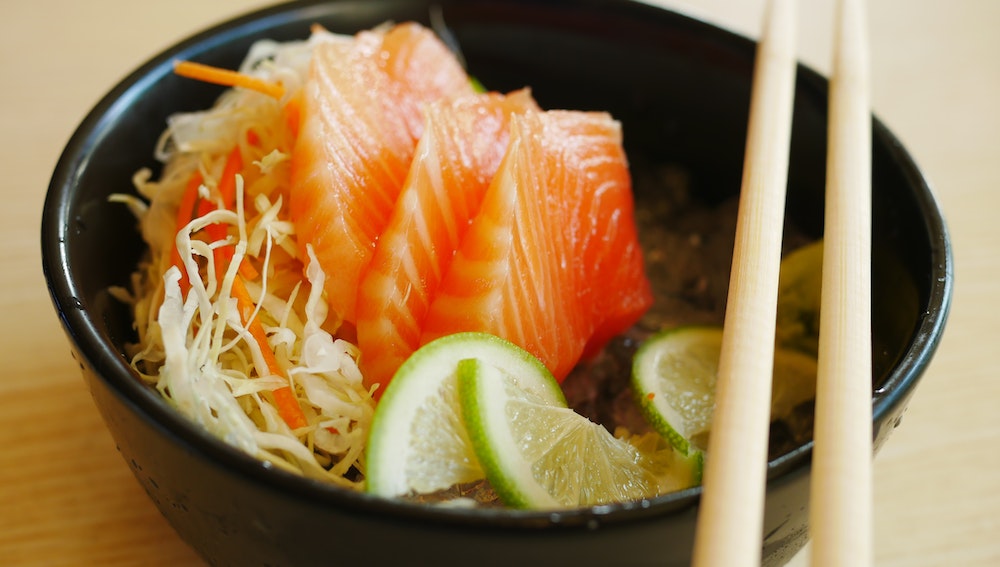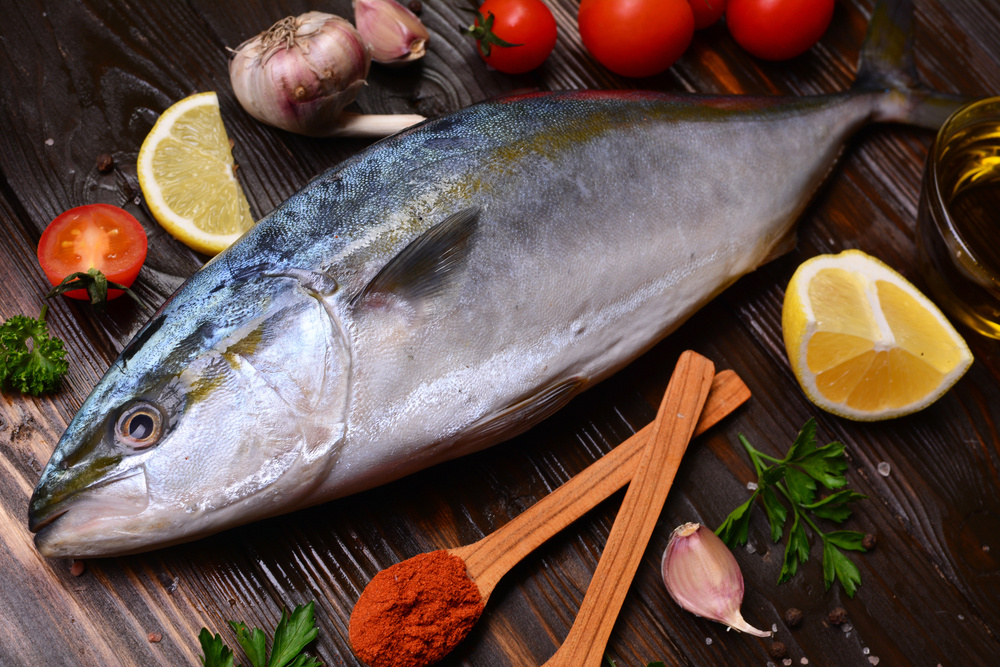Redfish, a popular seafood choice, has become increasingly trendy in recent years, thanks in part to its unique and delicious flavor.
As an abundant and versatile fish, catching the attention of chefs and home cooks alike, getting to know the taste of redfish is essential for any seafood lover.
Understanding the taste of redfish begins with recognizing its mild, yet distinct flavor profile. With a slightly sweet undertone and a hint of nuttiness, the fish’s moderately firm texture and white, flaky appearance make it an enjoyable and adaptable option for various recipes.
Cooking redfish correctly is crucial to appreciating its true flavors, as it can be prepared through grilling, baking, or pan-searing methods.
Whether you’re a seasoned seafood enthusiast or interested in trying redfish for the first time, exploring its taste profile, cooking techniques, and health benefits will provide a well-rounded understanding of this delicious fish.
Key Takeaways
- Redfish has a mild, slightly sweet, and nutty taste
- Cooking methods like grilling, baking, and pan-searing enhance its flavors
- Exploring redfish’s taste profile and cooking techniques helps appreciate its versatility
Understanding Redfish

Redfish, also known as red drum (Sciaenops ocellatus), channel bass, or simply red, are a popular game fish species found in the Atlantic Ocean and the Gulf of Mexico.
They are known for their distinct red color and the eye-like black spot near their tail.
As a versatile fish, redfish can be prepared in various ways, such as baking, broiling, grilling, and frying. Its taste is often described as mild and slightly sweet, with a firm texture that is neither too flaky nor too dense.
This makes redfish an excellent option for those who enjoy seafood with a more subtle flavor.
The size of a redfish can greatly impact its taste. Smaller red drum, typically weighing around 1-4 pounds, are known to have a more tender, sweeter flavor compared to their larger counterparts.
Larger redfish, which can weigh up to 90 pounds, may exhibit a stronger, fishier taste. Therefore, it is important to select redfish of appropriate size depending on one’s preference for taste and texture.
When cooking redfish, there are a few factors to consider for optimal taste. First, it is vital to ensure the fish is fresh. A fresh catch will provide the best culinary experience, as its flavor and texture remain at its peak.
Additionally, the method of cooking can also affect the taste. For instance, grilling or blackening redfish can add a smoky, rich flavor, while baking or broiling can preserve its more subtle, naturally sweet taste.
In conclusion, redfish is a highly versatile and delicious option for seafood lovers. By understanding the factors that impact their taste, such as size and cooking method, one can make the most of this flavorful fish.
The Taste Profile of Redfish

Underlying Flavors
Redfish, known for its mild flavor and white flesh, is a popular game fish among seafood enthusiasts. The taste profile of redfish doesn’t overpower your palate, which allows it to be versatile in various recipes.
Its subtle, sweet taste makes it an excellent choice for those who don’t appreciate a strong fishy taste.
Texture of Redfish
When it comes to texture, redfish offers a firm and flaky feel. This characteristic contributes to its popularity since it can hold up well to various cooking methods.
The white flesh of the redfish makes for a visually appealing dish, while its flaky texture allows it to absorb flavors from sauces, spices, and other ingredients easily.
Comparing with Other Seafood

To better understand the taste and texture of redfish, it can be helpful to compare it to other seafood options:
- Mild Flavor: Redfish is comparable to other mild-flavored fish such as cod, haddock, or halibut. All of these fish share a subtle taste that appeals to a wide range of people.
- Flaky Texture: Similar to tilapia or flounder, redfish has a flaky texture that makes it popular for pan-frying, baking or grilling.
- Firmness: Among white-fleshed fish, redfish is considered to have a firmer texture, which is comparable to grouper or snapper. The firmness allows for a satisfying bite that isn’t overly delicate.
In summary, redfish offers a delightful combination of mild, sweet flavors and a firm, flaky texture that appeals to seafood lovers and those with milder taste preferences.
Cooking Redfish
Redfish is a versatile and flavorful fish that can be cooked using various methods. In this section, we will discuss three popular cooking techniques: Baking, Grilling, and Frying.
Each method brings out a unique flavor profile that complements the fish’s natural taste.
Baking
Baking is a popular method for cooking redfish, as it allows for even heat distribution and retains the fish’s moisture. To bake redfish, preheat the oven to 350°F (180°C). Season the fish with salt, pepper, and other desired spices, and place it on a baking sheet or in an oven-safe dish.
You can also wrap the fish in aluminum foil to help lock in moisture and prevent it from drying out.
Baked redfish can be paired with various side dishes and sauces, depending on your preference. Some common options are:
- Lemon-caper sauce
- Garlic butter
- Fresh herbs and olive oil
Baking the fish usually takes about 20-25 minutes, depending on the thickness of the fillet.
Grilling
For those who enjoy a slightly smoky flavor, grilling redfish is an excellent choice. To grill redfish, start by preheating the grill to medium-high heat.
Brush the grates with oil to prevent the fish from sticking. Season the fish with your preferred spices and place it directly on the grill.
Grilled redfish is often served with zesty or tangy sauces, such as:
- Chimichurri sauce
- Lemon-herb vinaigrette
- Spicy mango salsa
Grilling usually takes about 3-4 minutes per side, depending on the thickness of the fillet. Be sure to carefully flip the fish to avoid breaking it apart.
Frying
Frying redfish is another popular cooking technique, resulting in a crispy exterior and tender flesh. There are two common methods for frying redfish: pan-frying and deep-frying.
Pan-frying involves cooking the fish in a shallow layer of oil in a skillet or frying pan. Start by heating the oil over medium heat, and then gently add the seasoned fish.
Cook for 3-4 minutes per side until the exterior is golden brown and crispy.
Deep-frying requires submerging the fish in hot oil. This method is often used for blackened redfish, a popular dish featuring a coating of bold spices. To deep-fry redfish, heat the oil to 350°F (180°C) in a deep fryer or heavy pot.
Lower the fish gently into the hot oil and cook for 5-7 minutes, until the coating is crispy and the fish is cooked through.
Regardless of the frying method, drain the cooked fish on paper towels to remove excess oil before serving. Fried redfish pairs well with tartar sauce, remoulade, or a simple squeeze of lemon juice.
Healthy Aspects of Redfish

Nutritional Profile
Redfish is a healthy and nutritious choice for those looking to include more seafood in their diet. It is a lean source of protein, with a 3-ounce serving (about 85 grams) containing approximately 20 grams of protein and only 100 calories.
This fish is also low in saturated fat, making it a heart-healthy option.
In addition to protein, redfish offers a variety of essential vitamins and minerals. It is an excellent source of iron, which is important for healthy red blood cells and general well-being.
Furthermore, redfish contains several key vitamins, such as vitamin D, vitamin B12, and niacin, which contribute to a robust immune system and overall health.
Omega-3 Benefits
One of the most notable health benefits of redfish is its omega-3 fatty acid content. These fatty acids are known to support heart health by reducing inflammation, lowering blood pressure, and decreasing the risk of blood clots.
In addition, omega-3 fatty acids have been associated with improved cognitive function and reduced symptoms of depression.
By regularly consuming seafood like redfish, individuals can ensure they are meeting the recommended intake of omega-3 fatty acids for optimal health.
Safety and Contaminants
While redfish is a nutritious option, it is important to note potential concerns regarding mercury and other contaminants. Mercury, a heavy metal, can accumulate in fish and may pose health risks if consumed in large quantities.
Generally, fish that are lower on the food chain, like redfish, tend to have lower mercury levels compared to larger predatory fish.
Federal guidelines recommend that women who are pregnant, nursing, or planning to become pregnant, as well as young children, should pay careful attention to their seafood consumption.
They should select fish with low levels of mercury and avoid fish that are high in mercury.
In summary, redfish is a healthy choice that offers a variety of nutrients, including protein, vitamins, and minerals, as well as the benefits of omega-3 fatty acids.
By being mindful of safety concerns related to mercury and other contaminants, individuals can enjoy the health advantages of incorporating redfish into their diet.
Redfish Recipes

Redfish is a popular and versatile seafood option that offers a mild, slightly sweet flavor. In this section, we will explore three easy and delicious redfish recipes: Redfish Tacos, Blackened Redfish, and Baked Redfish.
Redfish Tacos
Redfish tacos are a delightful fusion of seafood and Mexican cuisine. To prepare this dish, follow these simple steps:
- Season redfish fillets with a mixture of chili powder, cumin, paprika, salt, and pepper.
- Heat oil in a pan and sear the fillets for 2-3 minutes per side, or until fully cooked.
- Flake the cooked redfish and set aside.
- Warm corn tortillas and assemble tacos with redfish, shredded cabbage, diced tomatoes, avocado slices, and a drizzle of lime crema or chipotle mayo.
These flavorful tacos can be customized with additional toppings such as cilantro, salsa, or pickled jalapeños to suit one’s preference.
Blackened Redfish
Blackened redfish is a bold, spicy dish that highlights the natural flavors of redfish. To create this masterpiece, adhere to these guidelines:
- Combine paprika, cayenne pepper, garlic powder, oregano, thyme, salt, and black pepper to form blackening seasoning.
- Coat redfish fillets in blackening seasoning, ensuring even coverage.
- Heat a well-oiled cast-iron skillet over high heat, then cook fillets for 2-3 minutes per side, until blackened and cooked through.
Serve the blackened redfish on a bed of rice or alongside a simple green salad for a satisfying meal.
Baked Redfish
Baked redfish offers a healthy and enticing option for those looking for a lighter meal. Follow these steps to create a mouthwatering baked redfish dish:
- Preheat the oven to 400°F (200°C).
- Season redfish fillets with salt and pepper.
- Place seasoned fillets in a greased baking dish.
- In a small bowl, whisk together melted butter, lemon juice, minced garlic, and chopped parsley.
- Pour the butter mixture over the redfish fillets.
- Bake for 12-15 minutes, or until the fish flakes easily with a fork.
Consider serving the baked redfish with steamed vegetables or roasted potatoes to achieve a well-rounded and delicious meal.
Geographical Varieties of Redfish
Redfish, also known as red drum or Sciaenops ocellatus, can be found in various locations throughout the world.
In this section, we will explore the different geographical varieties of redfish that inhabit the Gulf of Mexico, Florida, Atlantic Ocean, Gulf Coast, and Caribbean Sea.
The Gulf of Mexico is home to a large population of redfish. They can be found in abundant numbers around the coastal areas where they thrive in shallow waters.
The Gulf’s warm climate and diverse food sources, such as shrimp and smaller fish, make it an ideal habitat for redfish as they continue to grow. These redfish are known for their tender, mild flavor.
Moving towards the east, Florida has a diverse and extensive redfish population. They can be found in the inshore areas of the Atlantic Ocean near the coastline as well as around the numerous bays and estuaries that are characteristic of the state.
Redfish caught in Florida are known for their rich, slightly sweet taste, which is attributed to the varied food sources available in this area.
In the broader Atlantic Ocean, redfish can be found ranging from the southern coast of the United States all the way up to Canada. The vast and diverse habitat of the Atlantic Ocean offers an abundance of potential food sources, which allows for variations in the taste of redfish caught throughout this region.
Generally, redfish from the northern range tend to have a firmer texture and stronger flavor, while their southern counterparts may have a more delicate taste.
The Gulf Coast, stretching from Florida to Texas, is another area where redfish can be found in plentiful numbers. Surrounded by marshes, estuaries, and coastal waters, this region’s redfish are known for their delicious taste, making them highly sought after by both recreational and commercial fishers.
The brackish waters found in parts of the Gulf Coast area contribute to a unique flavor profile that sets this region’s redfish apart from others.
Lastly, the Caribbean Sea is home to a smaller population of redfish. They live primarily around coastal areas and seagrass beds, where they feed on a diet primarily consisting of crustaceans and smaller fish.
The Caribbean redfish are known to have a more robust flavor due to the diverse ecosystem found in these waters.
In summary, the geographical location of redfish plays a significant role in their taste and texture. From the Gulf of Mexico to the Atlantic Ocean and Caribbean Sea, each region offers a unique set of environmental factors and food sources that influence the overall characteristics of the redfish found there.
Important Regulations for Redfish
Redfish, also known as red drum, are popular game fish with a distinct and pleasing taste. However, to protect the redfish population and ensure sustainable fishing practices, there are important regulations that must be followed.
In most regions, size limits are implemented to help maintain healthy redfish stocks. These limits vary depending on the location.
For example, in Florida, the minimum size limit for redfish is 18 inches, while the maximum size limit is 27 inches. Fishermen must accurately measure their catch to ensure compliance.
Another crucial aspect of redfish regulations involves bag limits, which dictate the number of redfish that can be kept by anglers per day.
Typically, these limits are set for both recreational and commercial fishers. In Texas, the daily bag limit for recreational anglers is three redfish per person, whereas, in Louisiana, recreational anglers are allowed to keep five redfish per day.
Additionally, some areas designate seasonal closures to protect the redfish population during their spawning season. During these periods, fishing for redfish is strictly prohibited, regardless of size and bag limits.
It is crucial to become familiar with the specific regulations in your region before heading out to fish for redfish.
To stay updated on the latest redfish regulations, it is recommended to regularly consult the website or publications of the local fisheries management agency.
This helps ensure compliance with all rules and regulations, promoting responsible fishing practices that contribute to the sustainability of the redfish population.
Frequently Asked Questions
How does redfish compare to salmon?
Redfish has a milder and slightly sweeter flavor than salmon. The texture of redfish is also firmer and less oily compared to salmon. Both fish are rich in nutrients and provide a healthy addition to your meals.
What is the taste difference between red snapper and redfish?
Red snapper has a mild, sweet taste with a hint of nutty flavor, while redfish has a slightly stronger yet also sweet taste.
The texture of red snapper is more delicate and flaky, while redfish has a firmer texture, making it suitable for various cooking methods.
Do redfish taste similar to catfish?
Redfish and catfish have distinct flavors. Catfish has a more assertive and earthy taste, partly due to its bottom-dwelling nature.
On the other hand, redfish has a subtler and sweeter flavor, which many people find appealing.
Which fish has a comparable taste to redfish?
Some fish with a comparable taste to redfish include black drum, striped bass, and sea trout. All three of these fish have a mild, sweet flavor profile and a firm texture, making them suitable substitutes for redfish in various recipes.
How does redfish taste compared to grouper?
Redfish has a slightly sweeter taste compared to grouper. The texture of redfish is also firmer than grouper, which is known for its tender, flaky texture. Both fish can be prepared using various cooking methods and are versatile in numerous dishes.
Is redfish considered a good eating fish?
Yes, redfish is considered a good eating fish due to its mild, sweet taste and firm texture. It is suitable for a variety of cooking methods such as grilling, baking, and pan-frying.
In addition, redfish is a healthy option as it is rich in nutrients, including protein and omega-3 fatty acids.







